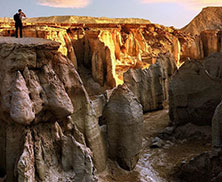-
Hotel Booking
-
- Mashhad hotels
- Tehran hotels
- Isfahan hotels
- Kish island hotels
- Tabriz hotels
- Qeshm island hotels
- Shiraz hotels
-
Mashhad hotels :
-
Sort by Price
-
Sort by Place
-

-
Tehran hotels :
-
Sort by Price
-
Sort by Place
-

-
Isfahan hotels :
-
Sort by Price
-
Sort by Place
-

-
Kish island hotels :
-
Sort by Price
-
Sort by Place
-

-
Tabriz hotels :
-
Sort by Price
-
Sort by Place
-

-
Qeshm island hotels :
-
Sort by Price
-
Sort by Place
-

-
Shiraz hotels :
-
Sort by Price
-
Sort by Place
-

ProfileMessagesSettingsSettingsSettingsSettings
-
- Cities
- Blog
- Discounts

Tabriz Bazaar
As the distinctive instance of cultural, traditional, and commercial exchanges of Iran, the northwestern city of Tabriz has long been one of the most significant trading hubs in the world attested by famous globetrotters such as Marco Polo and Ibn Battuta which reached its zenith in economic and social fields between 1316 and 1331 CE.
Due to its strategic location along one of the busiest east-west trade routes on the Silk Road during the 14th and 15th centuries CE, Tabriz rose in prosperity and its historical bazaar complex in the city center used to be considered as one of the most popular international commercial centers in Asia and the world between the 12th and the 18th centuries CE.
Registered by UNESCO as a World Heritage Site, the Bazaar Complex is among the oldest bazaars in the Middle East and the largest covered one in the world. Flourished during the rule of Safavid dynasty, the bazaar includes a labyrinth of intertwined and roofed brick structures with high arches and domes, serving a wide range of functions such as commercial and trade-related activities, social gatherings, and educational and religious practices.
Therefore, this integrated multi-functional urban complex is an outstanding example of a wide variety of architectural structures which are interconnected in a compact area.
Having highly-integrated architectural buildings and spaces for physical, economic, social, political, and religious affairs, Tabriz Bazaar is an exceptional prototype of an architectural-urban commercial area as the evidence to a flourishing civilization.
It developed into a sustainable socio-economic and cultural system in which specialized architectural structures, functions, professions and people from different cultures integrated into a unique living environment and thus its great complexity testifies to the rich trade and cultural interaction of Tabriz.
With a well-preserved integrity, the texture of bazaar showcases the original design, workmanship and materials, conveying all elements of significance as the physical structure and its functioning are closely related to each other and is still vibrant and economically active.
The bazaar played a special role in the events which led to the Iranian Constitution Movement in 1906 as it was closed and people protested which paved the way for signing the constitution and establishing the first Parliament.
For those who travel to the city of Tabriz, visiting the historical bazaar must be included in the trip schedule as it brings out valuable and unforgettable memories by enjoying the richness and beauty of this architecture masterpiece.


